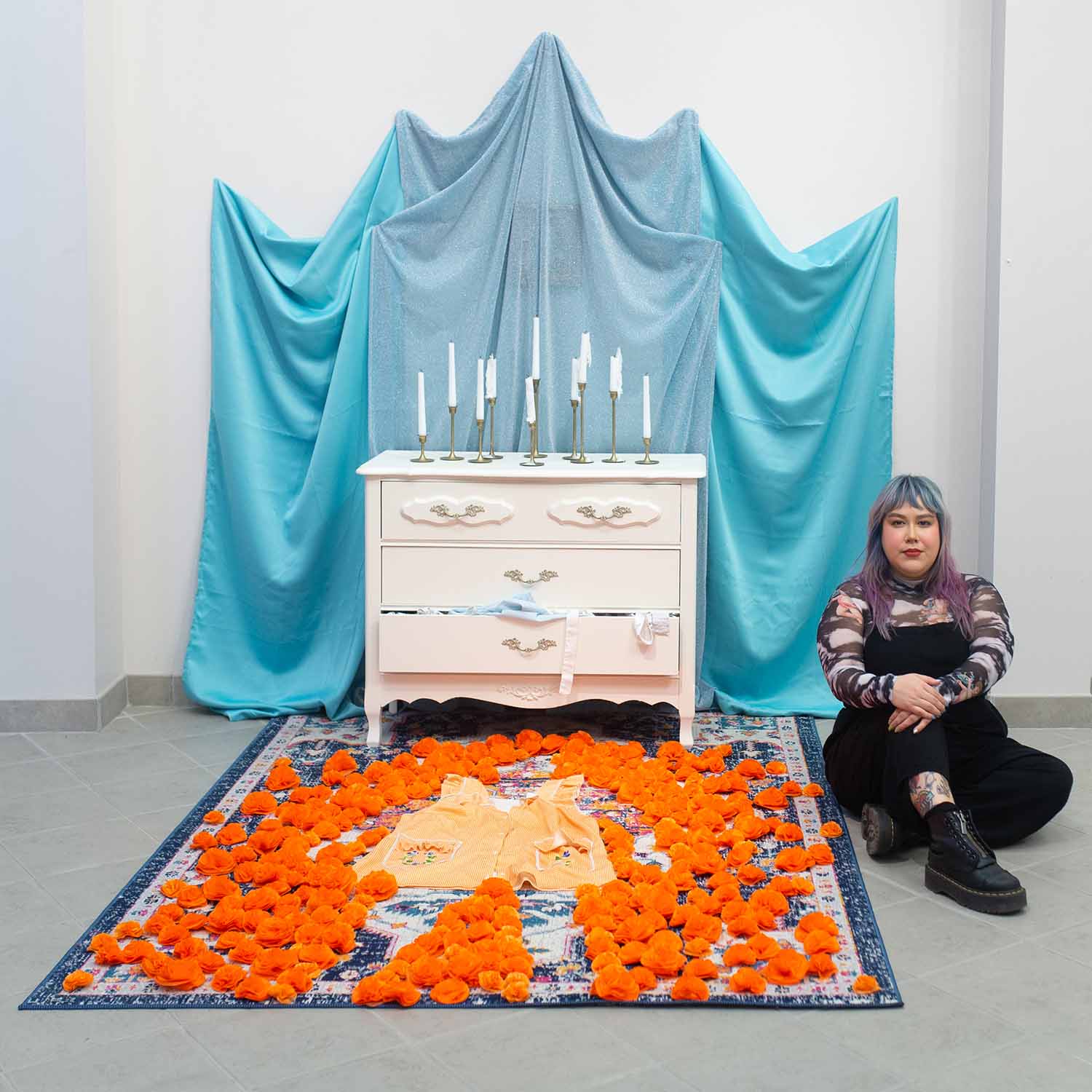Art and Inspiration: Q&A with professor Naomi Lemus

San Jacinto College North Campus professor and program alumna Naomi Lemus is a talented artist and educator. She shares about her journey, which has embodied resilience, determination, and a passion for both art and education

Q: Tell me about yourself.
A: I was born and raised in Galena Park. My mom still lives five minutes from the North Campus. Growing up as a first-generation Mexican American forced me to weave through multicultural environments and spaces, and that reflects who I am today.
Q: What is your San Jac story?
A: I came to San Jac because I didn't know where else to go or my college options. I am a first-generation college student, and all of this was new to me. I started with core classes and instantly became overwhelmed. My mom encouraged me to lessen my course load and look at things I enjoyed doing. That's when I enrolled in painting and drawing classes with Joe Clark, a wonderful mentor. I didn't even know then that being an art major was an option.
Q: What was life like after San Jac?
A: I enrolled at the University of Houston and earned my bachelor's degree in painting. And then I thought, “What now?”
I applied to several graduate schools and was denied to all but one. Temple University in Philadelphia put me on the waitlist. I didn't know if I would get in, but I remained hopeful. In May, I got a call that a spot opened. I didn't even think before saying yes.
It was the first time I left home and spread my wings. While at Temple, I learned to stand in my voice. I thought I didn't have the "right words" to talk about art, but my professors reminded me there is no right way to perceive art, and I had something to offer.
I've been fortunate with the professors at San Jac, the University of Houston, and Temple — people who have mentored and guided me through my journey gracefully.
Q: Why did you become an educator?
A: A few months before my graduate program's end, I sent Joe Clark a message and said, "Hey, I'm ready to come back." Luckily, there was an opening, and in August 2022 I became a full-time faculty member.
I didn't necessarily pursue art education, but it found me. I wanted to give back like many mentors had done for me. This career is perfect for where I am right now. I offer my students a unique point of view because it wasn't long ago that I was in their shoes, feeling self-doubt and questioning if I was good enough to belong. I need to encourage and validate my students' experiences as much as their artistic ability.
Q: Talk about your artistic journey and what inspires you.
A: My work looks to comprehend generational narratives of trauma through the lens of empathy, acknowledgment, mending, and forward movement.
My search for emotional healing is a personal and artistic practice that focuses on forms of assemblage installation. These installations pull from family archives, such as handwritten letters, family photos, and personal and borrowed memories. I work alongside family members to recreate memories that have shaped us and our perspective of loved ones.
These works draw from the “rasquachismo” art movement. Chicano curator and author Amalia Mesa-Bains explains that "in its broadest sense, 'rasquachismo’ is a combination of resistant and resilient attitudes devised to allow the Chicano to survive and persevere with a sense of dignity." “Domesticana” is a form of feminist “rasquachismo” — to undo the wounds of patriarchy and colonization.
Q: Additional thoughts?
A: I am consciously grateful every day for my experiences. I am lucky to be a full-time professor at my age, and I don't take that for granted. I've left myself open to opportunities, and that's been rewarding. I hope to instill that into my students as well.
Learn more about San Jac's fine arts programs
